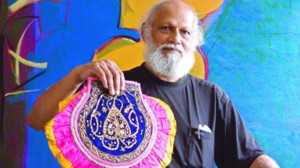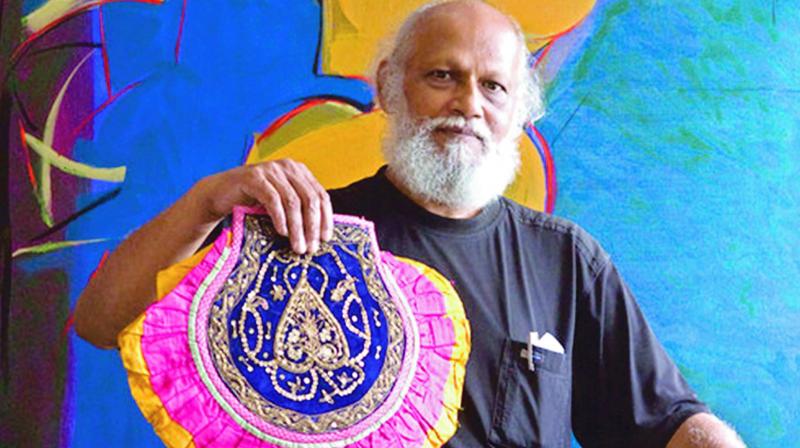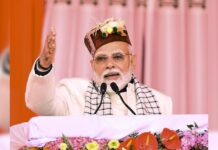
NEW DELHI: From being used as a common tool to fan oneself to sleep in hot summer afternoons, to being used in royal courts and temples, ‘Pankha’, a hand fan, over the centuries, has assumed important roles in wedding and religious ceremonies.
Over 500 fans collected by famous Indian artist Jatin Das, are part of an ongoing exhibition at the Indira Gandhi National Centre for the Arts (IGNCA) here.
Titled “Pankha: Hand-Fans from the collection of Artist Jatin Das”, the show features hand fans assembled over a span of 22 years, with each exhibit having a unique story to tell.
While some have been part of social customs in countries like Japan, China and Spain, others, procured from different parts of India, have mostly been used to combat the heat of Indian summers.
The idea of collecting fans first dawned upon Das one hot afternoon 40 years ago in an attempt to “stir the still air” for a depressed friend.
“I saw a friend sitting depressed in my studio in Nizamuddin, New Delhi. I picked up a pankha and with mock seriousness said, ‘Let me stir the still air’. It suddenly occurred to me that this would be the perfect title for a book on the pankha, and it was this amazing hand-fan that gave me the impetus,” he said.
Since then, the artist has collected around 6,000 hand fans from his travels across the world and as gifts from friends and admirers.
An artist with deep interest in traditional art, he would scout for hand fans every time he visited villages or towns in the Indian subcontinent, Das said.
The 76-year-old artist explained how the pankha found its way through almost every Indian art form, and were more than often associated with romance, rituals and royal courts.
“Almost every Indian art form features a pankha in depictions of myths, religious stories and tales of mortal adventure. Pankhas are associated with romance, as women used the tool to seduce, comfort, and cool their lovers with the gentle caress of softly disturbed air.
“Ceremonial fans were used in temples, decorated pankhas were an important part of a bride’s dowry, large fans were a crucial element of the social gatherings of aristocrats and nobles, and rudimentary pankha were used to fan cooking flames,” the Padma Bhushan awardee said.
The worth of the fans was determined through the materials used in their making.
Fans for daily use in India are largely made of bamboo and palm leaf, but higher quality fans have also been made of feathers from birds like ostriches, pigeons and peacocks, animals products like tusk and leather, and graceful techniques such as applique and Zardozi, a form of gold or silver embroidery on stretched cloth like silk or velvet.
In India, pankha making has been dominated by women in rural areas. Men of the family collect the raw materials and women weave them into unique pankhas either to be used or to get passed down as family heirlooms.
“The workmanship, effort and personal touch make these delicate objects invaluable,” the artist said.
The collection has a variety of fans including antique ceiling fans from the Mughal and Colonial period that were pulled by pankhawala from outside the room and used for large congregations in temples, royal courts and aristocratic darbars and offices.
There are fans called ‘phadh’, large hand fans held by an attendant for groups of affluent men and women.
A range of ceremonial fans and a large variety of personalized fans of many kinds made by women have also been put on show. Many of these fans are centuries old and are priceless antiques.
Apart from his assortment of fans, the exhibition also includes a wide range of paintings, prints, scrolls, poetry, and photographs, some of which were taken by Das on his journey, displaying the prevalence of hand fans across history.
The exhibition was first held at National Crafts Museum here in 2004, before travelling to the Victoria Memorial in Kolkata. Over the years, it has been held at Fan Museum in London, Rietberg Museum in Zurich, National Art Gallery in Kuala Lumpur, National Museum in Manila, Philippines and at the ‘Maximum India Festival’ at The John F. Kennedy Centre in Washington DC.
Repeated handing, mounting and dismantling of the exhibition has left the artist worried for the “fragile objects”, who has now decided to set aside “a separate collection of similar fans will for travelling exhibition in future”. PTI







